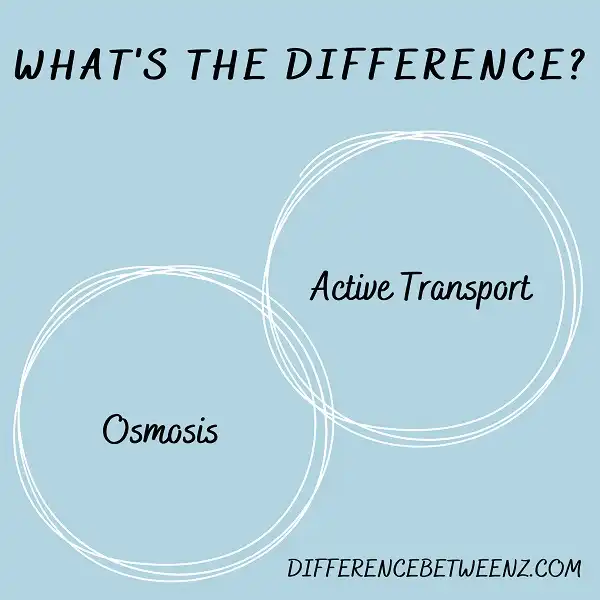Osmosis and active transport are both mechanisms that cells use to move molecules across the cell membrane. Though they share this common function, the two processes are actually quite different. In this article, we will take a closer look at the difference between osmosis and active transport, and we will explore how each process helps cells to carry out their vital functions.
What is Osmosis?
Osmosis is a process that occurs when molecules of a solvent (such as water) move from an area of high concentration to an area of low concentration through a semi-permeable membrane. The semi-permeable membrane allows the solvent molecules to pass through, but not the solute molecules. As the solvent molecules move into the area of low concentration, they equalize the concentrations on both sides of the membrane. Osmosis is used by cells to regulate their internal environment and is also responsible for the movement of water across cell membranes.
What is Active Transport?
- Active transport is the movement of molecules across a cell membrane against a concentration gradient. This process requires energy, which is provided by the hydrolysis of ATP.
- Active transport can be used to move molecules up a concentration gradient, against the direction of diffusion. This is important in cells because it allows them to maintain internal conditions that are different from the external environment.
- Active transport can also be used to move molecules down a concentration gradient, in the same direction as diffusion. This can help to speed up the overall process of diffusion. Active transport is an important process that helps to regulate the internal environment of cells.
Difference between Osmosis and Active Transport
- Osmosis and Active Transport are two processes that are used to move molecules across a cell membrane. Osmosis is the diffusion of water across a semi-permeable membrane, while active transport is the movement of molecules against a concentration gradient.
- Osmosis occurs when there is a higher concentration of water on one side of the membrane than on the other, and the water diffuses across the membrane to equalize the concentrations.
- Active transport requires energy, and it can move molecules against a concentration gradient. It is used to transport molecules that are too large or too polar to diffuse across the membrane. Osmosis and active transport are both important processes that help to maintain homeostasis in cells.
Conclusion
Active transport is more expensive because it requires energy from the cell, but it can move larger molecules across the membrane. Osmosis is less expensive since it doesn’t require any energy, but it can only move small molecules.


